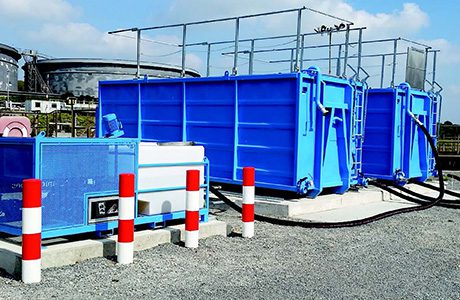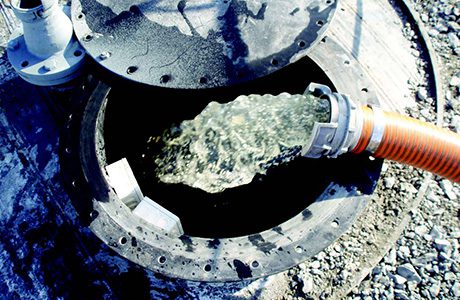By Steve Lawrie of Dexter Watson, a supplier of design services to the waste sector
One place where the mounting pressure on water authorities is very visible is in the way they are forced to operate their wastewater treatment works, many of which are dated and soon reach capacity during busy periods. Restrictions such as gate reception timings and site closures often have to be imposed to help the treatment works cope during busy or environmental crisis periods. It’s no wonder you see an all too familiar knock-on effect: Private contractors arriving with tankered waste.

Contractors have come up with new initiatives to overcome the increasing restrictions being imposed and to take ownership of the way they dispose of their waste. With this in mind there has been an upsurge in firms deciding to dewater their waste streams using on-site methods, normally through dewatering containers and dosing units, belt presses, centrifuges or even basic filter bags, all of which have proven to be a great success making individual businesses more profitable and environmentally friendly, and reducing the burden on wastewater treatment works.
What are the advantages of dewatering?
The advantages reported by private contractors have included the savings made on transport costs – up to 75% – and on disposal costs – up to 80%. Having a 24/7 facility at their disposal has stopped contractors being reliant on gate reception and discharge times and (importantly) relieving the frustration of standing loads that can’t be off loaded! Other advantages re- ported include the ability to place the dewatering equipment at a lo- cation close to the contractor’s operation resulting in higher productivity. The phrase “it’s a no brainer” might not be out of place.
What happens to the separated waste streams? The filtrate arising from the dewatering process can be harvested and, depending on its nature, is ether used for soil improvement during drought conditions, tankered away in bulk and dis- posed of at a lower rate, recycled and used through a conventional jetting system, or – ideally – discharged to a foul system which is normally metered and charged for by the water company. The solid fraction or cake produced is then taken for disposal, usually to landfill or if de-ragged before the de- watering process, it can be mixed with green waste and composted again (usually used as a soil enhancer after being lime stabilised). If a thickened sludge is required then the dewatering process can be restricted to stop a cake forming before it is tankered away.

How are the savings made?
There a number of ways savings are made using dewatering:
• Reduction in the overall volume for disposal at the treatment works.
• Disposal at a more favourable rate.
• Lower fuel consumption and operating costs.
• Better time management.
• Improved forward planning.
• More control over resources.
• The ability to be more reactive to demands.
What are the operating costs?
The operating cost of a facility is dependent on the type of dewater- ing system used, with the simpler variants obviously translating to lower cost. However the main cost is the flocculant used to cause the sludge to separate. The average cost to treat 1m3 is normally be- tween £0.15p and £0.30p and is dependent on the solid content of the sludge being treated.
• Dexter Watson supplies equipment, products and services for use in the water and waste indus- try.







